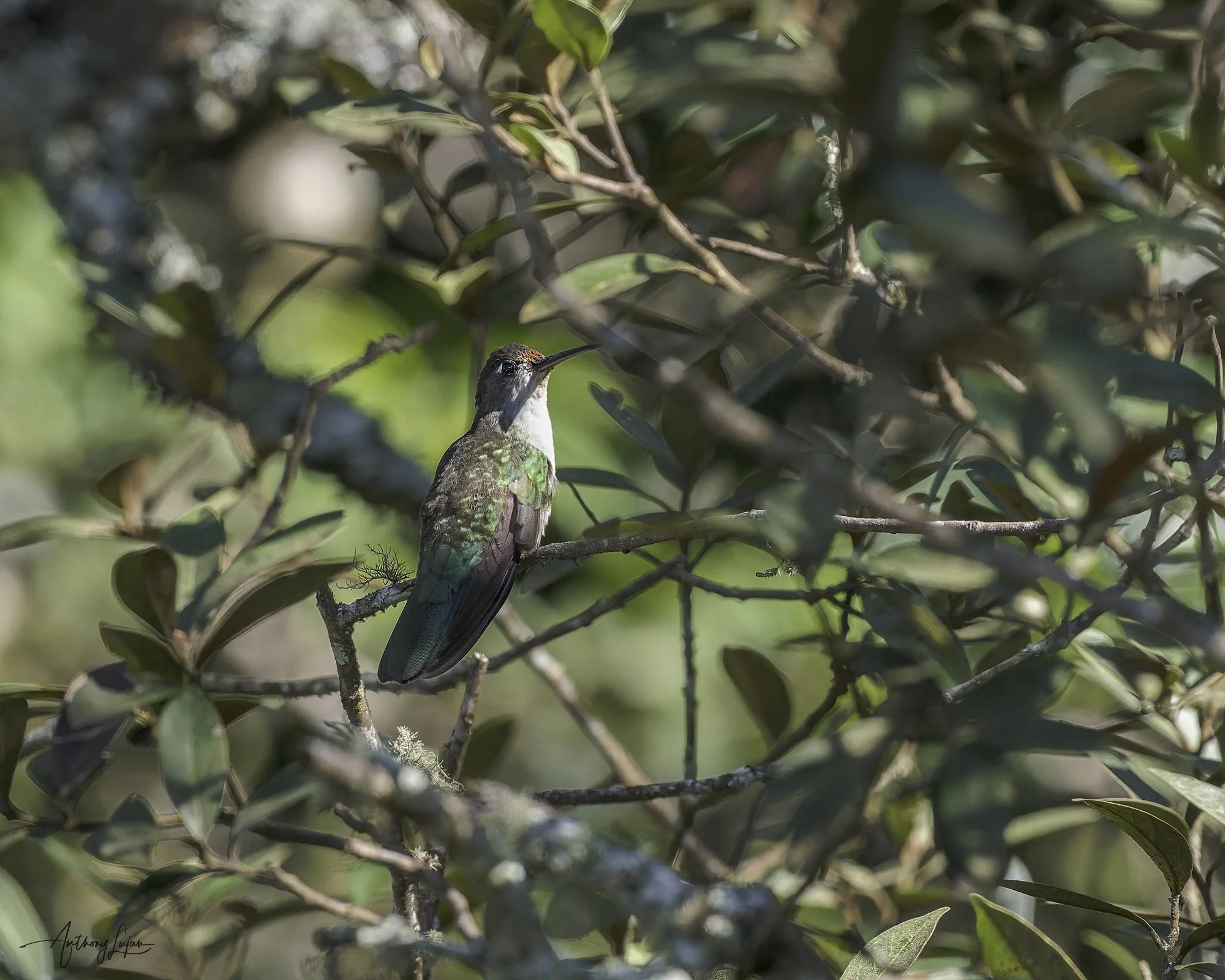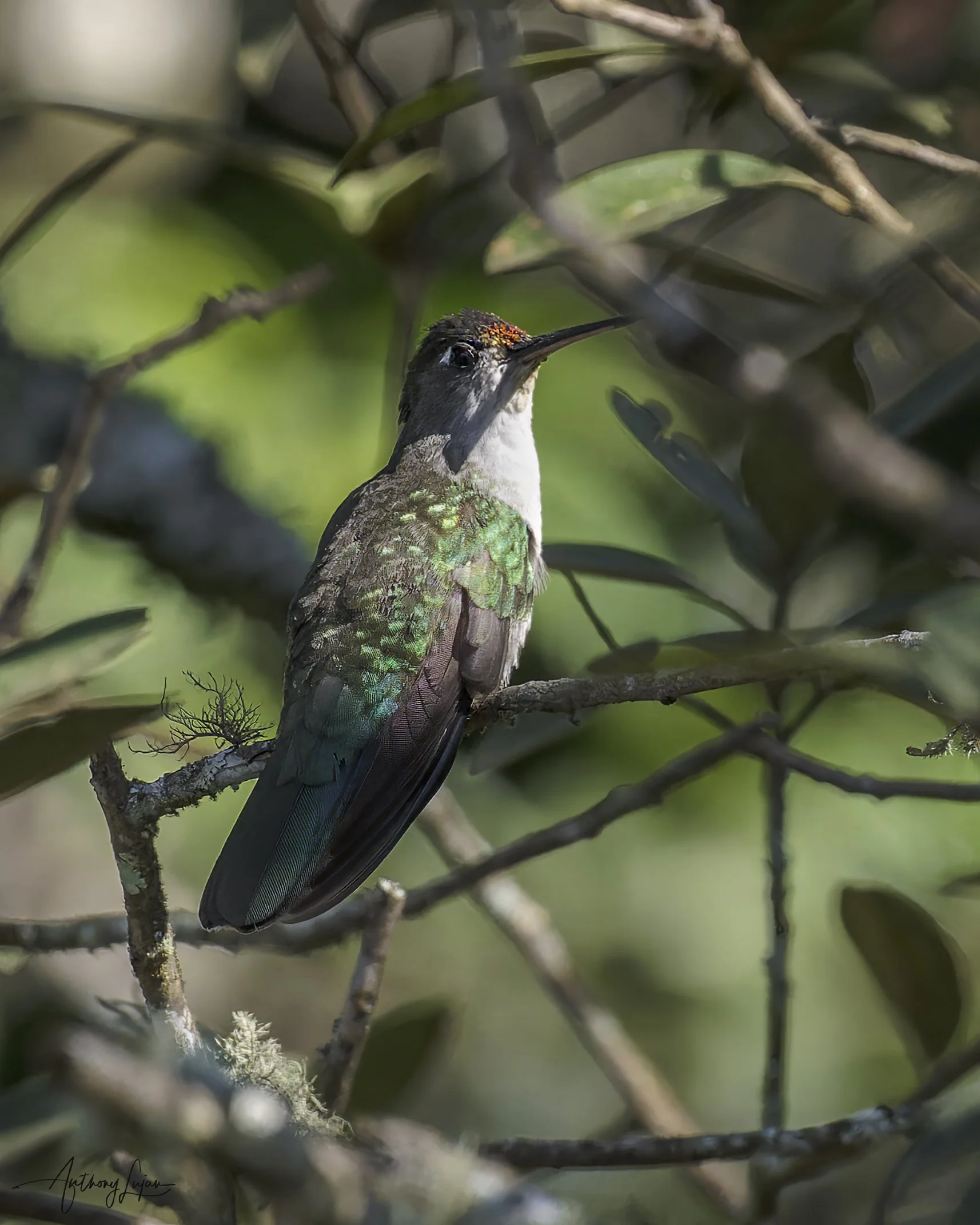Diamantina Sabrewing
Diamantina Sabrewing (Campylopterus diamantinensis)
Name Origin:
The genus name Campylopterus comes from Greek kampylos (“curved”) and pteron (“wing”), referring to the sabre-shaped outer primaries characteristic of the group. The species name diamantinensis references Diamantina, a historic town in the Espinhaço Mountains of Minas Gerais, Brazil, where the species occurs and was first described.
Quick Facts
🪶 Length: 12–13 cm (4.7–5.1 in)
⚖️ Weight: 6.5–7 g (0.23–0.25 oz)
🌎 Range: Endemic to the Espinhaço Range, Minas Gerais, southeastern Brazil
🧭 Elevation: 900–1,400 m (2,950–4,600 ft)
🌸 Diet: Nectar and small insects
🏡 Habitat: Montane forest edge, gallery forest, and campo rupestre (rocky highland scrub)
🧬 Clade: Trochilini “Sabrewings” (montane hummingbirds of tropical America)
📊 Status: Endangered (IUCN 2024)
Subspecies & Distribution
Monotypic species — no recognized subspecies.
Distribution: Restricted to the northern Espinhaço Range in Minas Gerais, southeastern Brazil, around the municipality of Diamantina. Occurs in gallery forests, riparian zones, and high-altitude scrub between 900–1,400 meters. The species’ known range is estimated at under 300 km², with highly fragmented populations.
Species Overview
The Diamantina Sabrewing is a spectacular and highly localized Brazilian endemic, glittering with metallic green upperparts and a bright sapphire-blue throat. Long known only from 19th- and early 20th-century specimens, it was rediscovered in 2015 during surveys of the Espinhaço Mountains — a major event in Neotropical ornithology. Despite its rediscovery, it remains one of South America’s most range-restricted hummingbirds.
Male Description:
The male displays shimmering emerald-green upperparts, a brilliant blue-violet throat and breast, and grayish underparts with green gloss. The tail is dark bronze, and the long, curved primaries form the characteristic “sabre” shape. When displaying, the male hovers and flares its tail to expose metallic reflections.
Female Description:
The female is green above with grayish underparts, a bluish throat wash, and a shorter, rounded tail. Her wing shape is similar but less pronounced than the male’s.
Habitat & Behavior:
This species inhabits humid montane forest edges, riparian strips, and rocky grassland mosaics, where it feeds on nectar from flowering plants including Palicourea, Vochysia, and Melastomataceae shrubs. It also hawks for small insects in open areas. Typically solitary and territorial, the Diamantina Sabrewing maintains small feeding territories along forest borders and stream corridors.
Conservation Note:
The Diamantina Sabrewing is listed as Endangered by the IUCN. For decades it was known only from museum specimens collected in the 1800s, leading to fears of extinction. Its rediscovery in 2015 (with additional confirmed records in 2017 and 2022) proved the species persists, though in very limited numbers. Habitat loss from deforestation, mining, and fire within the Espinhaço Range remains the primary threat.
Conservation initiatives led by SAVE Brasil and local research teams are now focusing on habitat protection and ecological monitoring to ensure the survival of this jewel of the Brazilian highlands.



